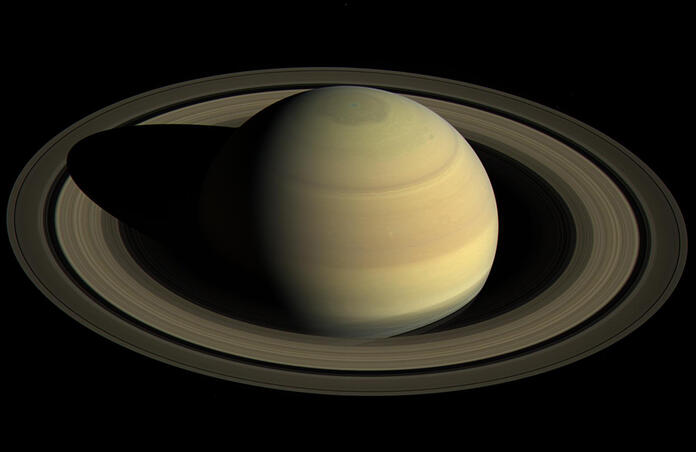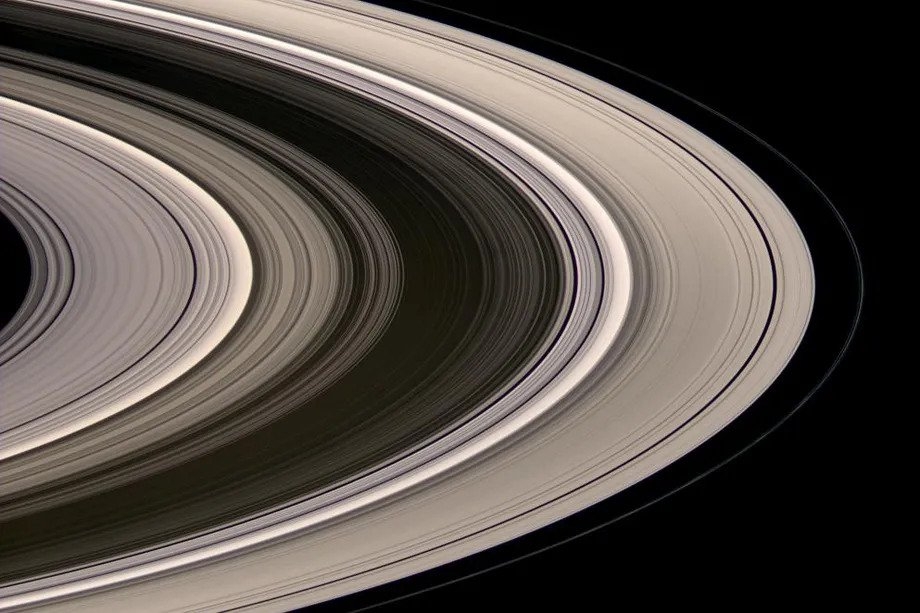Saturn's rings are disappearing- but at what rate?

Since the 1980s, scientists have been aware that Saturn’s innermost icy rings are gradually eroding onto the gas giant’s atmosphere. This was first revealed through observations made by NASA’s Voyager 1 and 2 probes, with Cassini taking a closer look leading to the theory that Saturn’s gravity and magnetic field attract matter from its rings. However, the question regarding the rate at which the rings are shrinking remains, and a team of astronomers hope to find an answer.

Saturn is one of the gas giant planets in our solar system, known for its extensive ring system comprising icy rocks that orbit the planet at varying speeds. Current research states that ring particles gain an electrical charge due to solar radiation, allowing the material to bind to the planet's magnetic field lines. The particles are first pulled in due to the sun's gravity before being directed into the planet’s upper atmosphere by the magnetic field. The amount of material raining onto the gas giant may be influenced by the planet's tilt. As Saturn orbits around the sun, it has a tilt, leading to the planet moving towards and away from the star. As a result, its rings copy this movement. Therefore, this tilt plays a role in determining the level of impact the solar radiation has on the inner rings, in the region where ring rain is triggered. "We suspect that when the rings are edge-on with the sun, the ring rain will slow down," explains James O'Donoghue, a planetary scientist at the Japan Aerospace Exploration Agency who will lead the new study. "And that when they are tilted to face the sun, the ring rain influx will increase."
According to NASA’s Cassini spacecraft, high amounts of the icy material rains down. The spacecraft passed through the gap between the planet and rings 22 times, revealing 880-6000 pounds of ring rain per second, subsequently heating the upper atmosphere. The rate of this downfall is comparable to an Olympic-sized swimming pool amount of water raining down each day!
However, the exact rate at which the rings are disappearing still remains unknown, which calls for the use of the mighty JWST. "We're still trying to figure out exactly how fast they are eroding," explains O'Donoghue. "Currently, research suggests the rings will only be part of Saturn for another few hundred million years." If the high rates of condensation as observed by Cassini continue, the rings may meet their demise in 300 million years, a relatively fast time in the cosmic world. However, the rate of this material flow is still uncertain, and current ring lifetime estimates span 100 million to 1.1 billion years. “Right now we only have one very wide estimate," O'Donoghue told Space.com on Wednesday (April 26). "We want to make more observations which narrow down this influx range."
Joining James Webb in the effort to estimate the lifetime of the rings is the Keck Observatory in Hawaii. Using these telescopes, a long-term investigation will be run to study the gas giant and its rings. Fluctuations in ring rain will be monitored over the course of a full season which spans around 7 Earth years. The signature of such rain is through an excess of ultraviolet radiation, seen as a spectral line of hydrogen in the planetary atmosphere. Emission of the hydrogen molecule peaks when a small amount of ring material falls into the atmosphere, however, it plateaus during high levels of ring rain. Therefore, monitoring these changes in the emission during one season will help the team to understand how much of this ring material is being lost to the upper atmosphere.
Although the new research will help with forecasting the future of the rings, there is still an ongoing debate concerning their formation. There is a discrepancy in the age of the system, with various models aging the rings as old as the formation of the solar system at 4.5 billion years, however, Cassini suggested a more youthful age of 10 million to 100 million years old. This large difference is mainly due to the brightness of the rings. Older rings are typically darker, whereas Cassini observed the rings to be bright. However, heavy ring rain has been suggested to be the factor behind the brighter, younger rings.
"I think it would be fascinating if the lifetime of the rings was only 100 million years or so and that their age was billions of years," O'Donoghue told Space.com. "Since it means we evolved just in time to see them before they vanished."
--
Cover image: NASA
